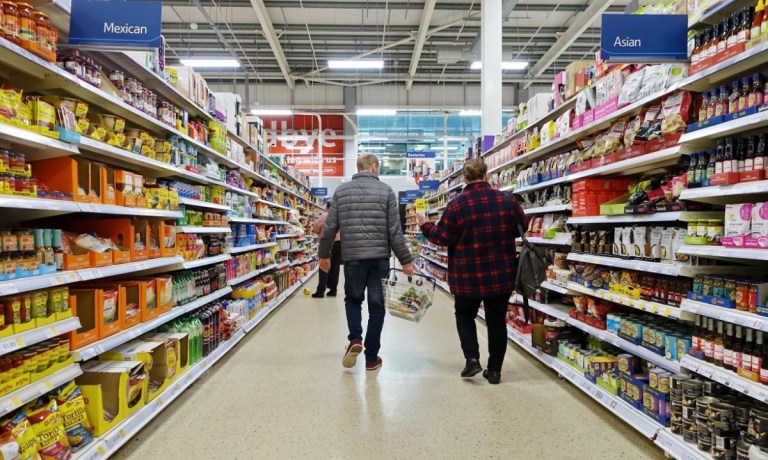Walmart Taps Automation in Bid to Broaden Grocery Lead Over Amazon

As Walmart looks to hold its own against Amazon’s growing lead in retail, the company is leaning into its food and beverage stronghold, leveraging automation to scale its omnichannel grocery presence.
On Wednesday (July 10), the retail giant announced plans for the future of its grocery network, which include stepping up the technology at four of its perishables distribution centers, adding more than 500,000 square feet of automation to each. These facilities are in Minnesota, North Carolina, Indiana and Tennessee. Additionally, the retailer is also retrofitting a distribution center in Florida with new automated technologies.
“As customers change the way they shop, we’re taking steps to build even more trust with them, ensuring the things they want — and need — are on shelves faster than ever before,” Dave Guggina, executive vice president, supply chain operations at Walmart U.S., wrote. “To do that, we’ve been investing in data, increasingly intelligent software and automation — all to transform our business and create a more connected supply chain.”
Meanwhile, Amazon is reportedly coming up against challenges in its global grocery expansion. British regulator Groceries Code Adjudicator (GCA) wants Amazon to improve its relations with grocery suppliers, and may open an investigation into the eCommerce giant if it doesn’t.
The announcement followed the GCA’s release of its annual survey investigating how well retailers manage relationships with suppliers. Findings revealed that as grocers overall were treating suppliers better, less than half of Amazon’s suppliers said the company “consistently” or “mostly” complied with the Groceries Supply Code of Practice.
“Amazon must ensure suppliers understand the changes it has made since its designation and in response to these survey results, and make any further changes that are needed to ensure Code compliance,” Mark White, the Groceries Code Adjudicator, commented in a statement. “I will not hesitate to launch a formal investigation if appropriate and necessary to ensure Amazon is treating its suppliers fairly and lawfully.”
Overall, while Amazon has a considerably larger share of consumers’ retail spending than Walmart, the latter is winning in the food and beverage space.
PYMNTS Intelligence’s study “Whole Paycheck Report: New Consumer Spend Data Finds Amazon Way Ahead of Walmart” estimates the two retail giants’ market share in various categories based on earnings reports in conjunction with U.S. Census Bureau and Bureau of Economic Analysis data. The results reveal that as of the close of last year, Amazon captured a 10% share of retail spending, while Walmart captured 7.3%.
Yet when it comes to food and beverage, Walmart is leading the competition, holding a 19% share of consumer spending in the category compared to Amazon’s 3%.
By investing in boosting the efficiency of its grocery fulfillment capabilities, it seems Walmart is focusing on what it does well in an effort to hold onto and perhaps even grow its lead. Grocery is a particularly valuable category, considering the frequency with which consumers make such purchases, and Walmart is evidently looking to capture all the loyalty it can get.